Meghalaya is a land of breathtaking wonders, and among its most fascinating treasures are the living root bridges—nature’s own engineering marvels. Imagine crossing a bridge not built by human hands but grown over decades from the intertwined roots of rubber fig trees! Crafted by the indigenous Khasi tribe, these root bridges are a testament to their deep connection with nature. Unlike wooden or bamboo bridges that weaken during the monsoons, these living structures grow stronger with time, making them a vital and sustainable part of Meghalaya’s landscape. These natural wonders are a must-see from single-level crossings to the incredible double-decker living root bridge. Dive into my blog for everything you need to know about exploring the root bridges of Meghalaya, including trek details, must-visit spots, and travel tips!
The Fascinating Story Behind Meghalaya’s Living Root Bridges
The Khasi people have always shared a deep bond with nature, crafting ingenious solutions to thrive in Meghalaya’s challenging terrain. This state receives some of the highest rainfall in India, and its landscape is crisscrossed by countless rivers, streams, and cascading waterfalls. For the indigenous Khasi and Jaintia tribes, navigating these rugged hills, especially during the extended monsoon season, was a formidable challenge.
Nearly two centuries ago, these communities devised a sustainable and remarkable solution—the living root bridges. They mastered the art of guiding the aerial roots of the Ficus elastica (Indian rubber tree) across water bodies, patiently weaving them over decades until they transformed into sturdy, functional bridges. Unlike wooden or bamboo bridges that decay over time, these root bridges of Meghalaya only grow stronger with age, some lasting for hundreds of years.
One of the most spectacular examples is the double-decker living root bridge, a unique two-tiered structure that stands as a true marvel of bioengineering. These bridges are not just a means of crossing streams—they are living, breathing entities that represent the deep-rooted harmony between the Khasi people and their environment.
My Journey to the Living Root Bridges
I had this incredible opportunity to witness this natural wonder during my first visit to Meghalaya in December 2024. From the iconic double-decker root bridge in Nongriat to the mesmerizing single-root bridges hidden deep in the forests, my journey through Meghalaya’s lush landscapes was nothing short of magical.
For a full Meghalaya itinerary, check out my detailed travel blog.
Now, let me take you through my adventure, sharing all the details you need to plan your own trek to these awe-inspiring bridges!
Cherrapunji to Tyrna
For the best experience visiting Meghalaya’s living root bridges, I highly recommend staying in Cherrapunji (Sohra). While doing a day trip from Shillong is possible, be prepared for a long and exhausting journey. Cherrapunji, on the other hand, offers a range of accommodations, from cozy homestays to hotels. I chose to stay at Sa-i-Mika Resort, a serene spot nestled amidst lush greenery.
The trek to the living root bridges begins at Tyrna village, which is about 12 km (a 25-minute drive) from Cherrapunji, depending on your stay location. You can hire a private cab or opt for a shared taxi from the Cherrapunji market area to reach Tyrna. Once there, you’ll find small shops selling snacks and bamboo walking sticks (₹20 each). Though I’m not usually a fan of trekking poles, I picked one up, knowing it would come in handy for the steep return climb.
A few local boys offered to be our guides, but the trail is well-marked, making it easy to navigate without one. However, if you enjoy learning local insights or want a helping hand along the way, hiring a guide could enhance the experience!
Now, let’s dive into the trek itself—descending thousands of steps, crossing hanging bridges, and finally reaching the breathtaking double-decker root bridge of Nongriat!
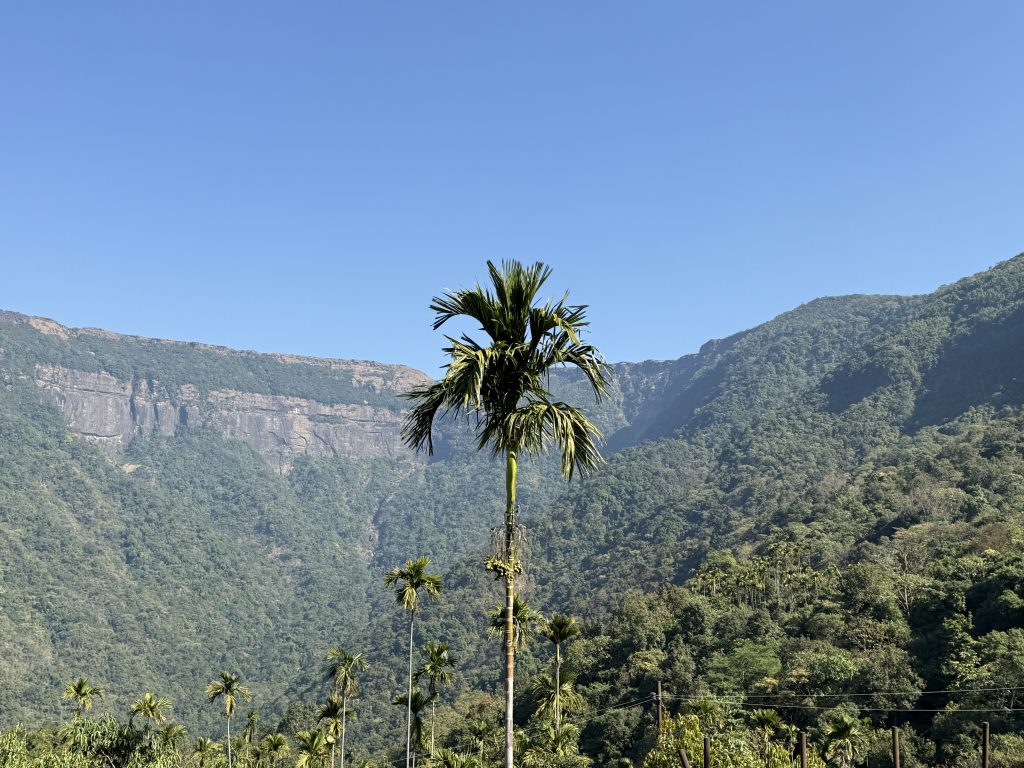
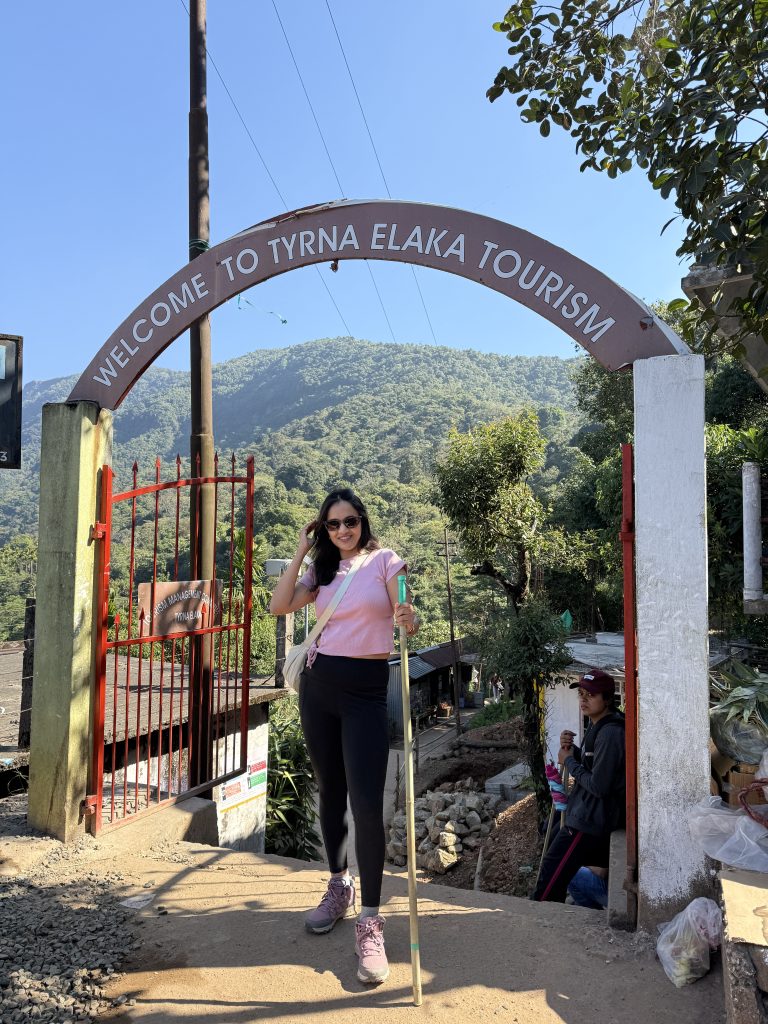
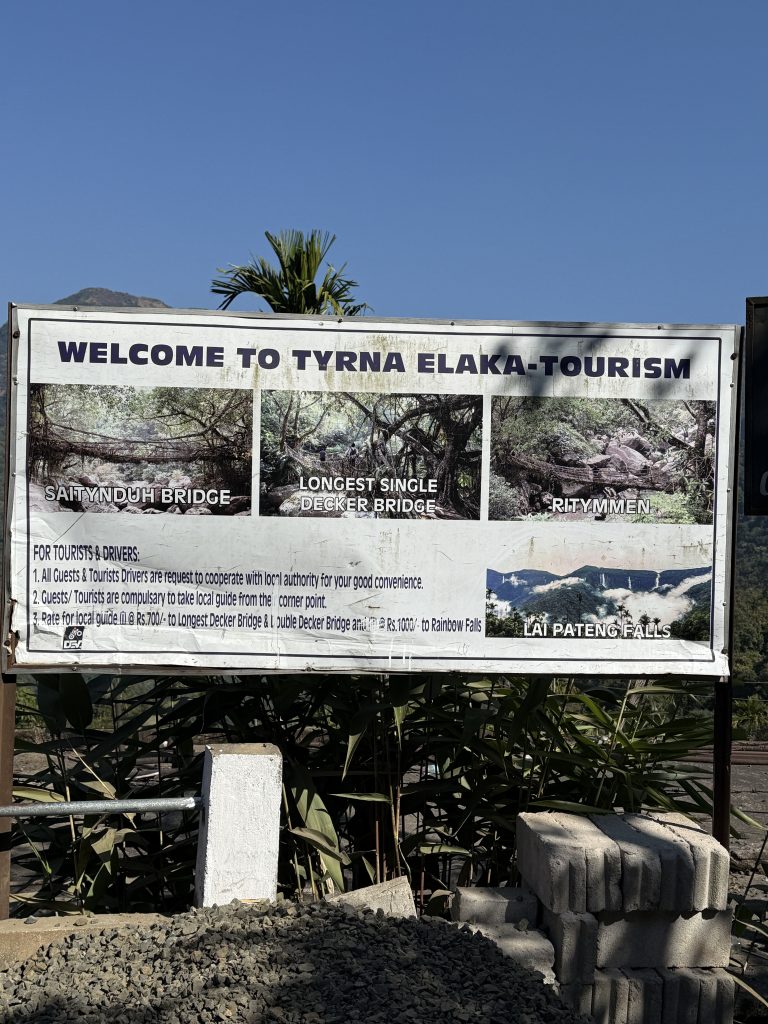
Tyrna to Double Decker Living Root Bridge in Nongriat
The trek to the Double Decker Root Bridge in Nongriat is both challenging and rewarding, offering an unforgettable experience through Meghalaya’s lush landscapes. The journey kicks off with a steep descent of 3,500 steps, a test of endurance that leaves your legs burning but is softened by the breathtaking views along the way.
Midway, we reached Nongthymmai village, the midpoint of the trek, where a detour leads to a Single Root Bridge. We decided to save it for later and pressed on toward our main destination.
One of the most thrilling moments came when we crossed a suspension bridge swaying high above a crystal-clear river. Though the bridge wobbled with each step, the surreal blue waters below looked just like the dreamy pictures I had seen online. A few minutes ahead, we stumbled upon a lesser-known living root bridge, a charming teaser for what lay ahead.
Finally, after passing the last ticket counter at Nongriat, we saw the Double Decker Living Root Bridge standing majestically over the river. The bridge, crafted entirely from the roots of Ficus elastica, was bustling with visitors, yet its raw beauty remained mesmerizing. We clicked some pictures and then took a break at the nearby shops, enjoying Maggi, momos, and chai while dipping our feet in the river. The tiny fish nibbling at our toes? A free natural pedicure!
This was nature’s brilliance at its best, and the adventure was far from over.
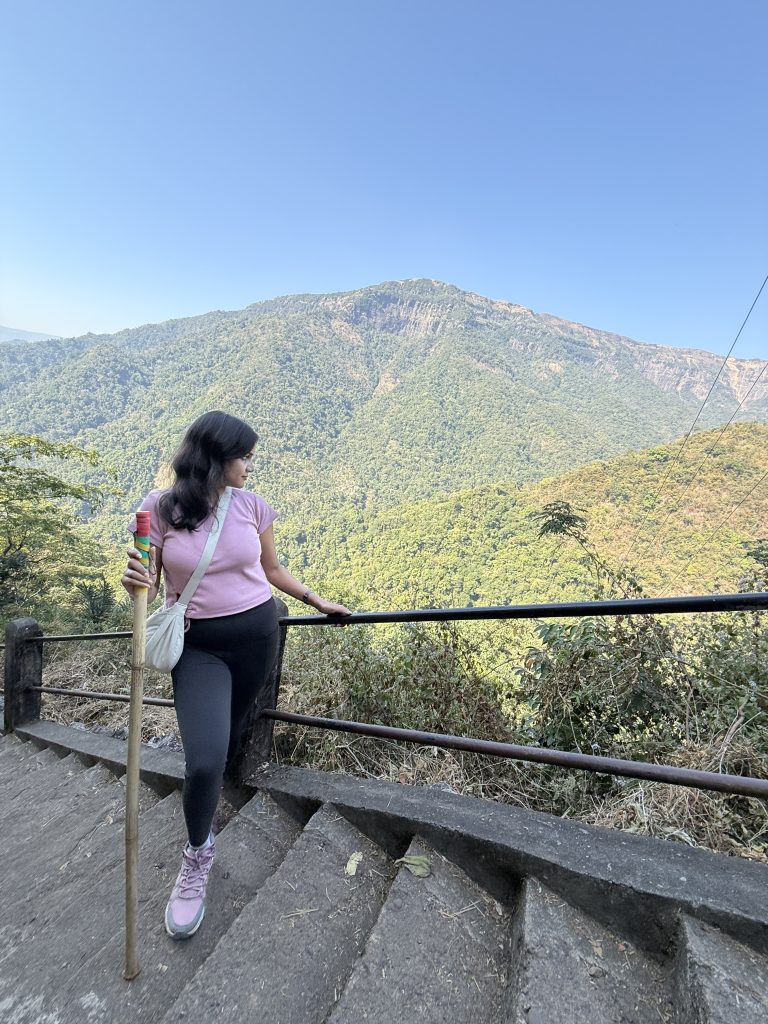
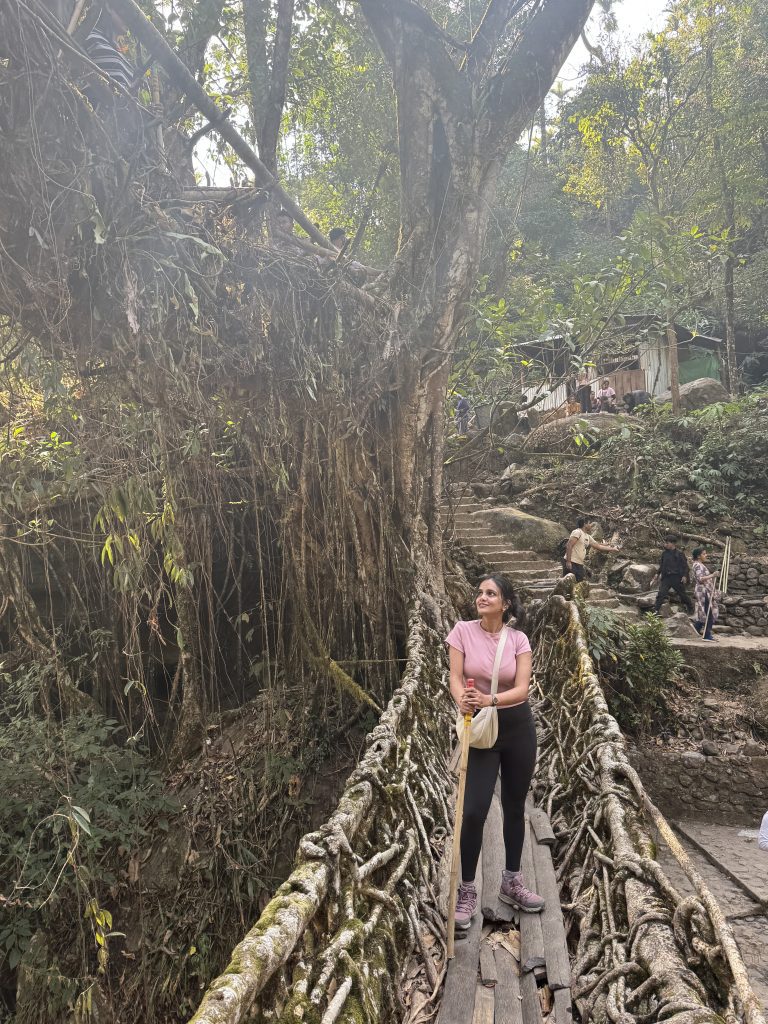
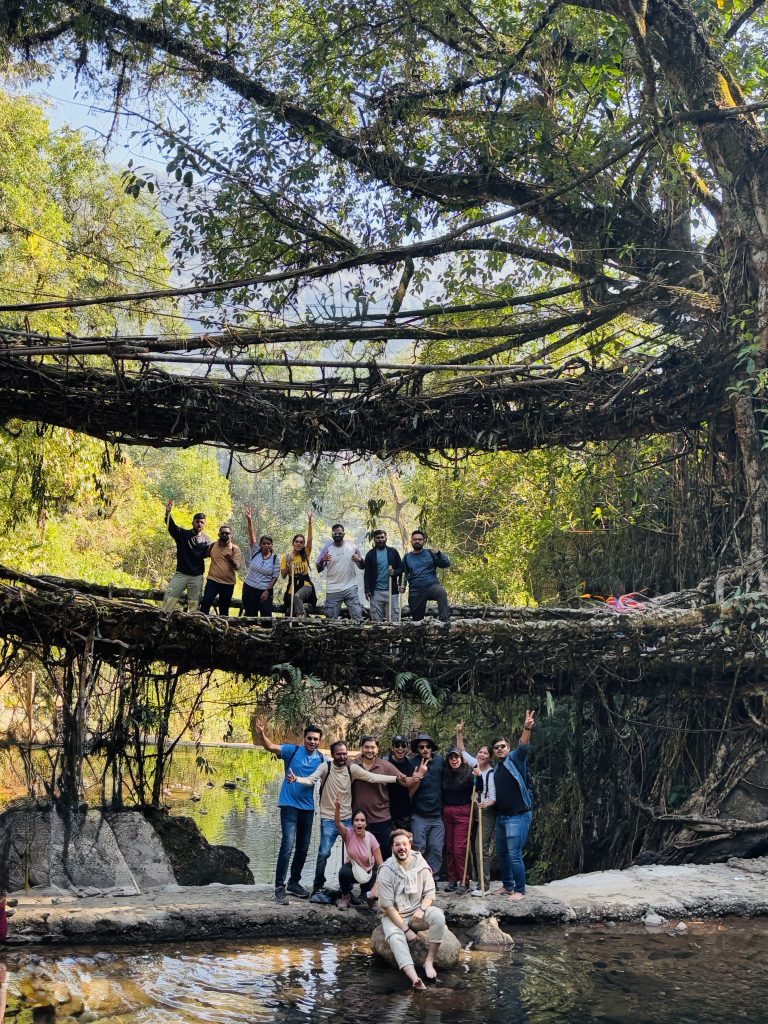
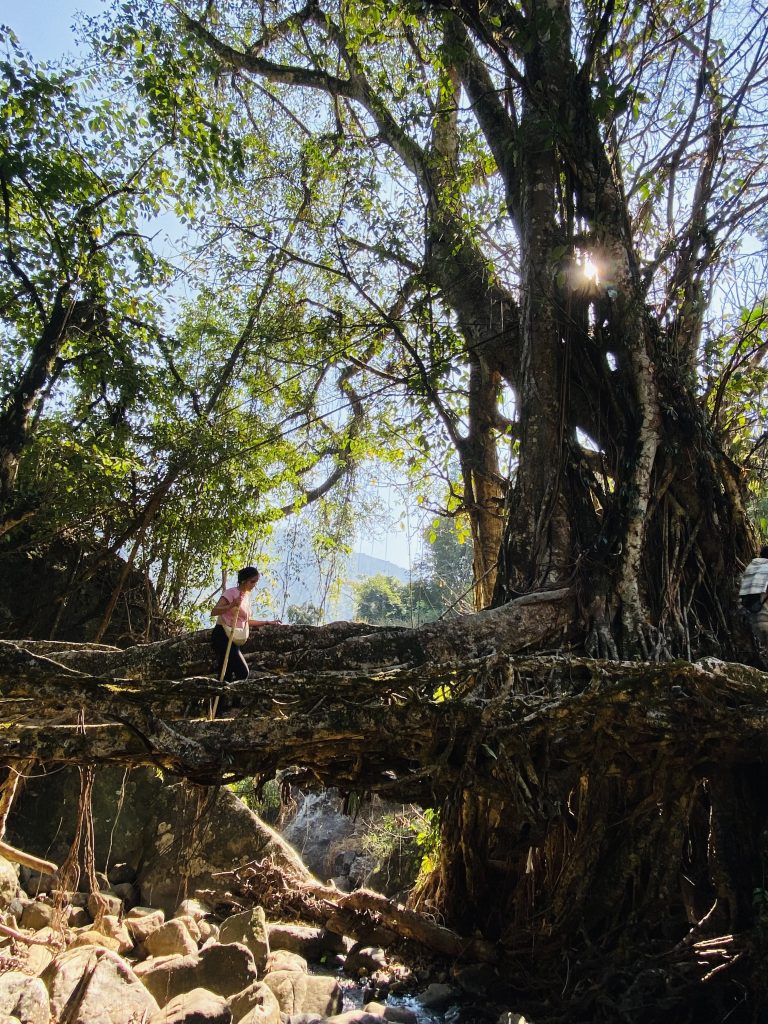
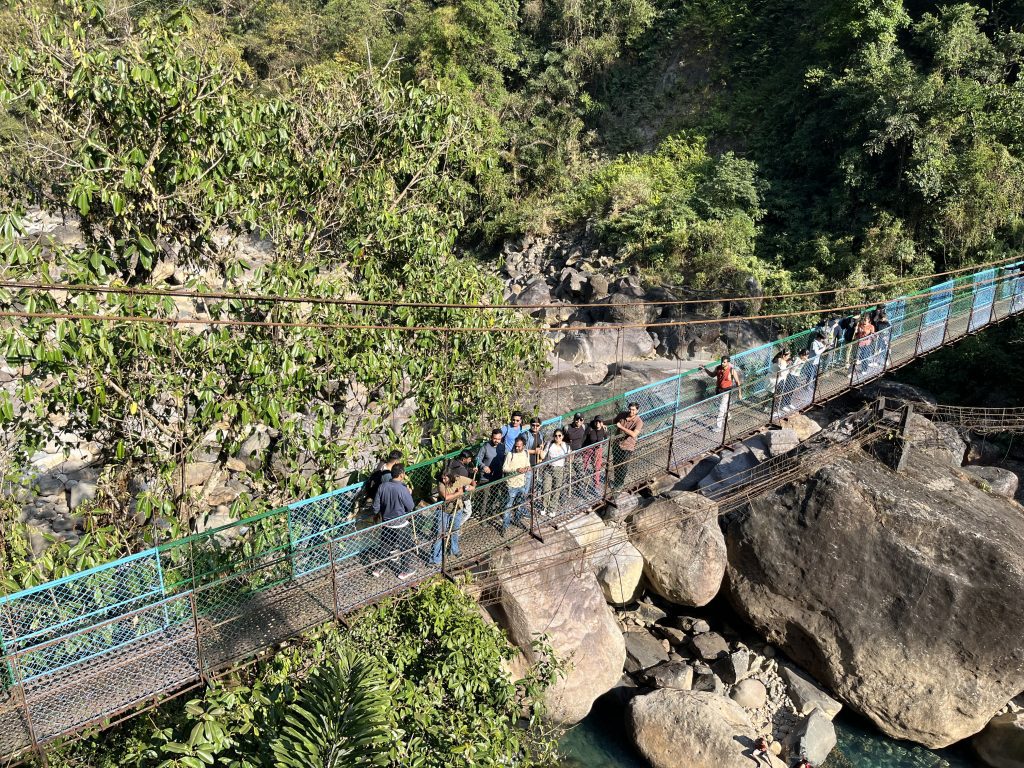
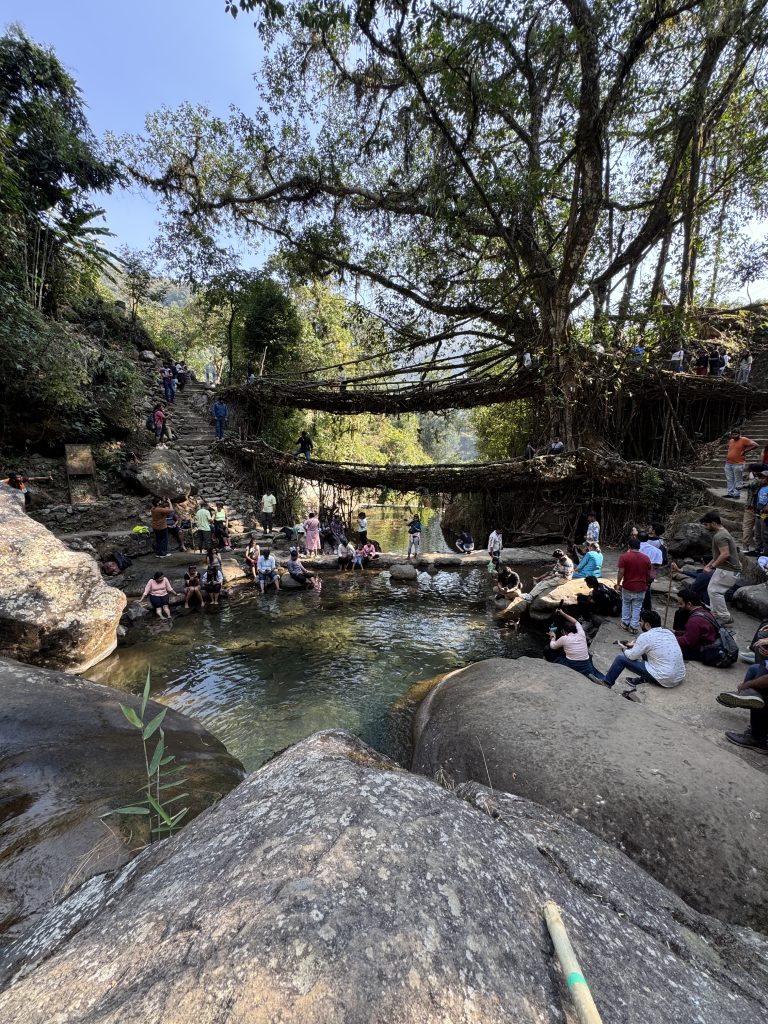
A Hidden Gem on the Way Back – The Blue Lagoon
On our way back from the Double Decker Living Root Bridge, we took a refreshing detour to the Blue Lagoon, nestled just below the iron suspension bridge. The moment we arrived, we were spellbound—the crystal-clear blue waters looked almost unreal, untouched by filters or edits, a true natural wonder.
Some adventurous travelers couldn’t resist a dip in the lagoon, letting the cool water wash away the exhaustion of the trek. We, however, chose to simply sit back, soak in the serene beauty, and let the peaceful surroundings recharge us before heading to our next stop.
A visit to the Blue Lagoon isn’t just about sightseeing—it’s about pausing to embrace nature’s magic before continuing the adventure.
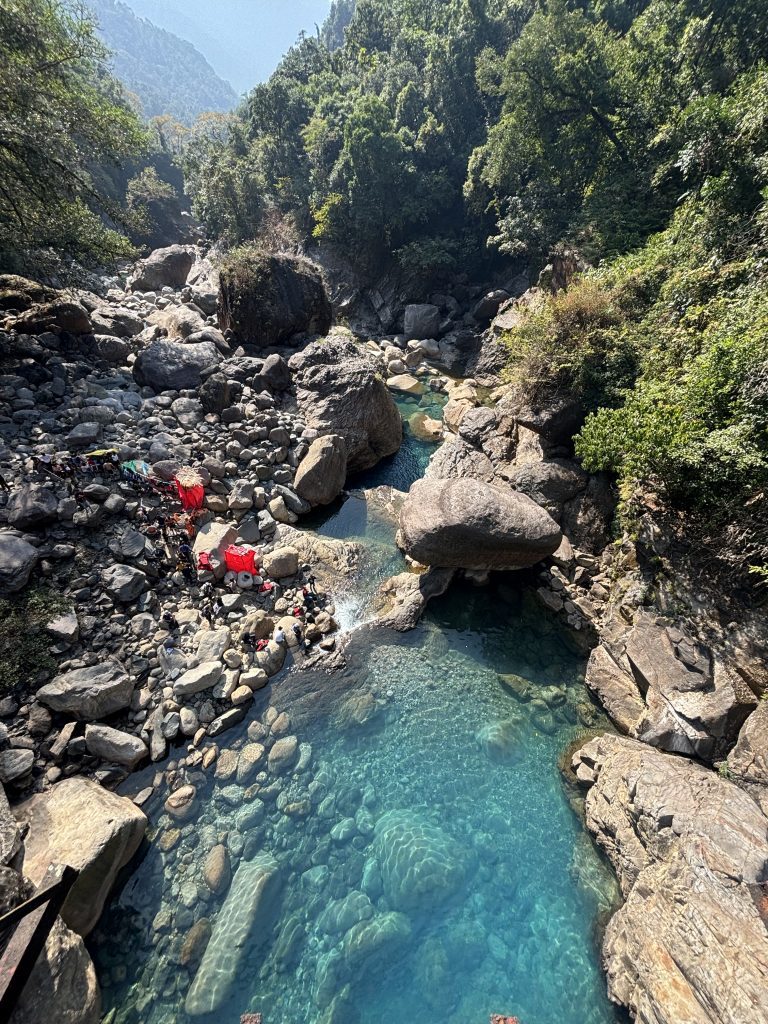
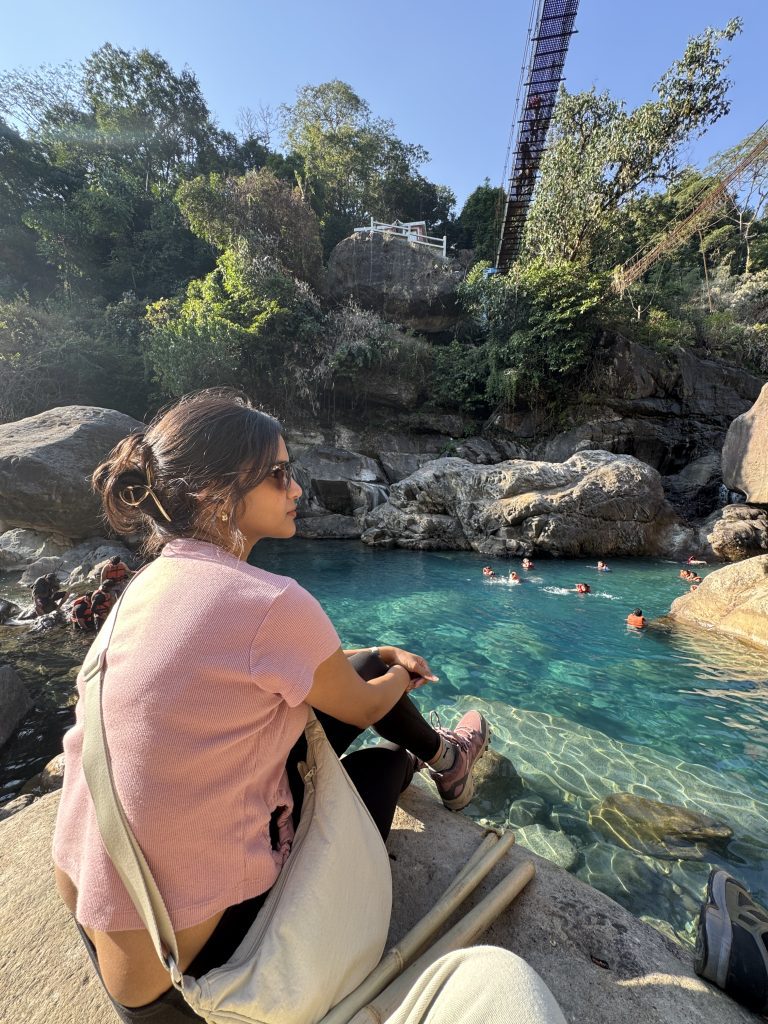
Single Root Bridge
After leaving Nongriat, we climbed back 1,500 steps to reach a quieter, lesser-visited gem— the Single Root Bridge. With an entry fee of just Rs. 10 per person, this spot felt far more serene and untouched compared to the Double Decker Root Bridge.
Surrounded by towering mountains and dense greenery, the bridge stood as a perfect example of nature and tradition blending seamlessly. Unlike Nongriat, there were no shops or crowds here, making it an ideal place to pause, reflect, and truly embrace the tranquillity of Meghalaya’s living root bridges.
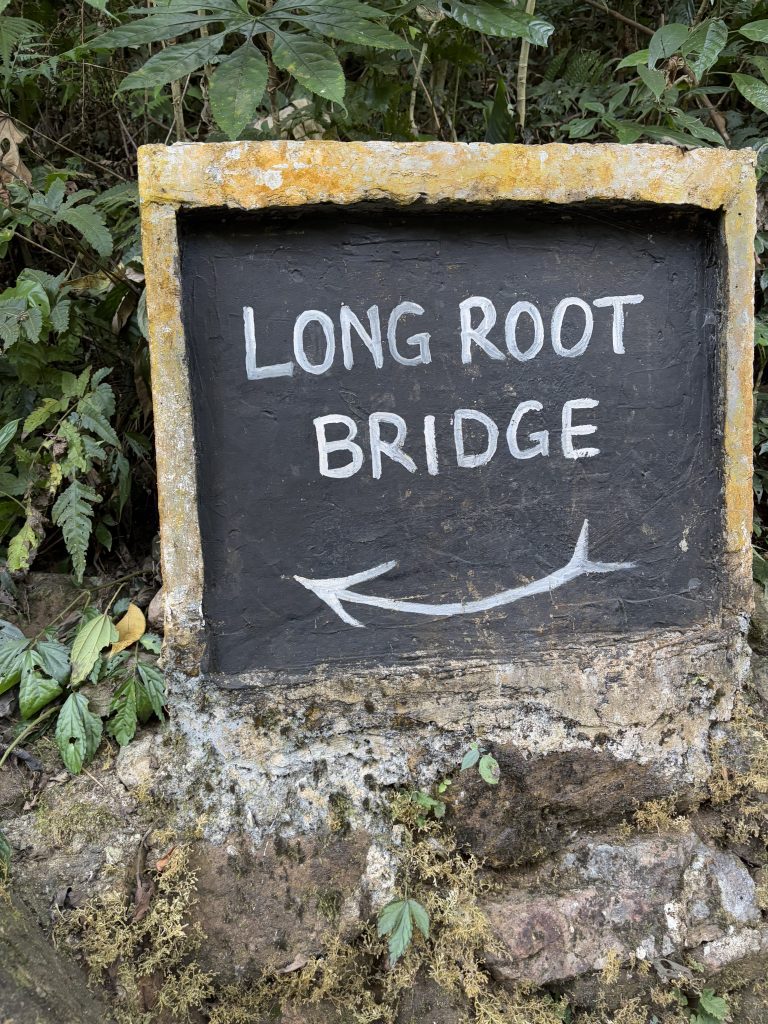
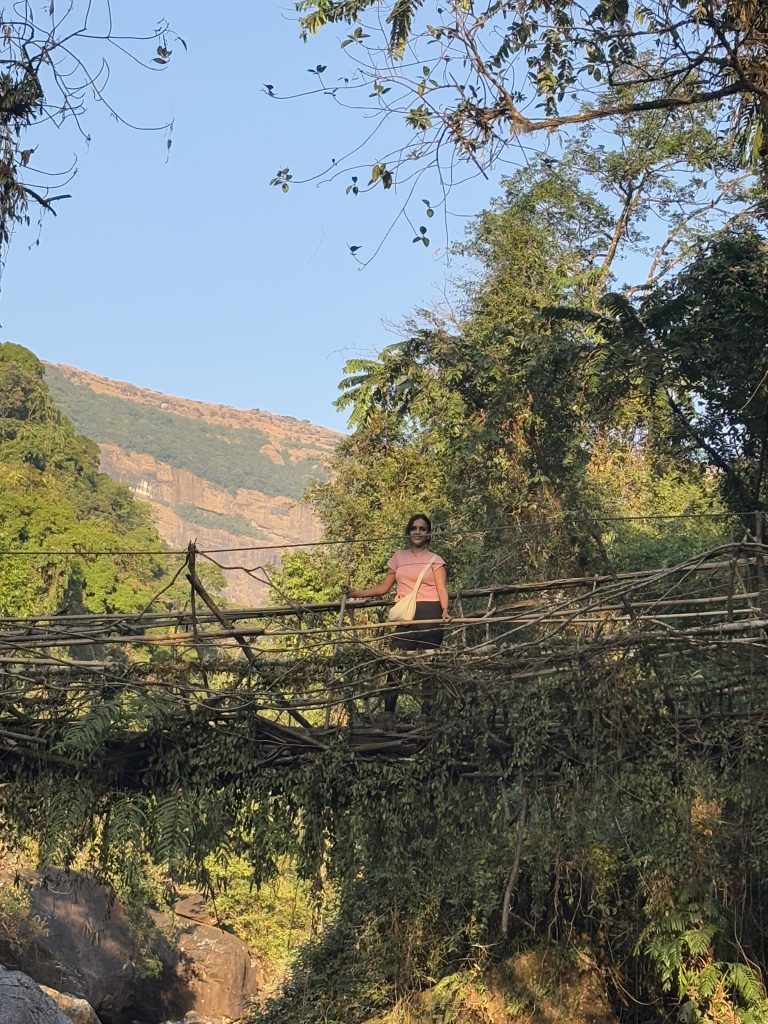
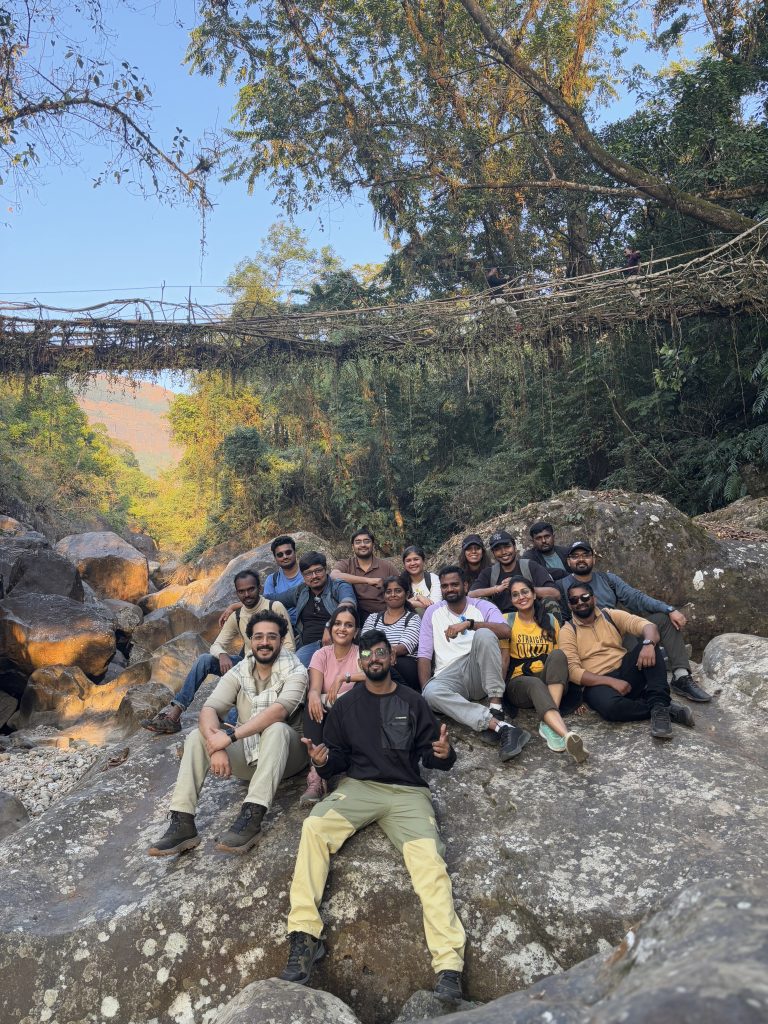
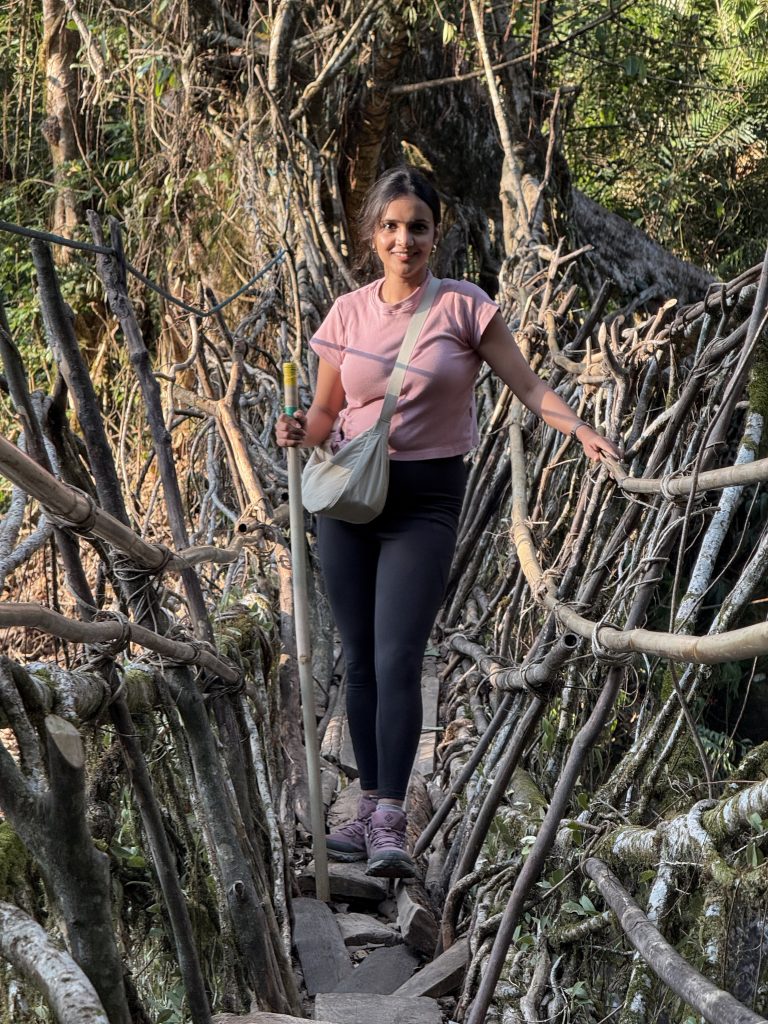
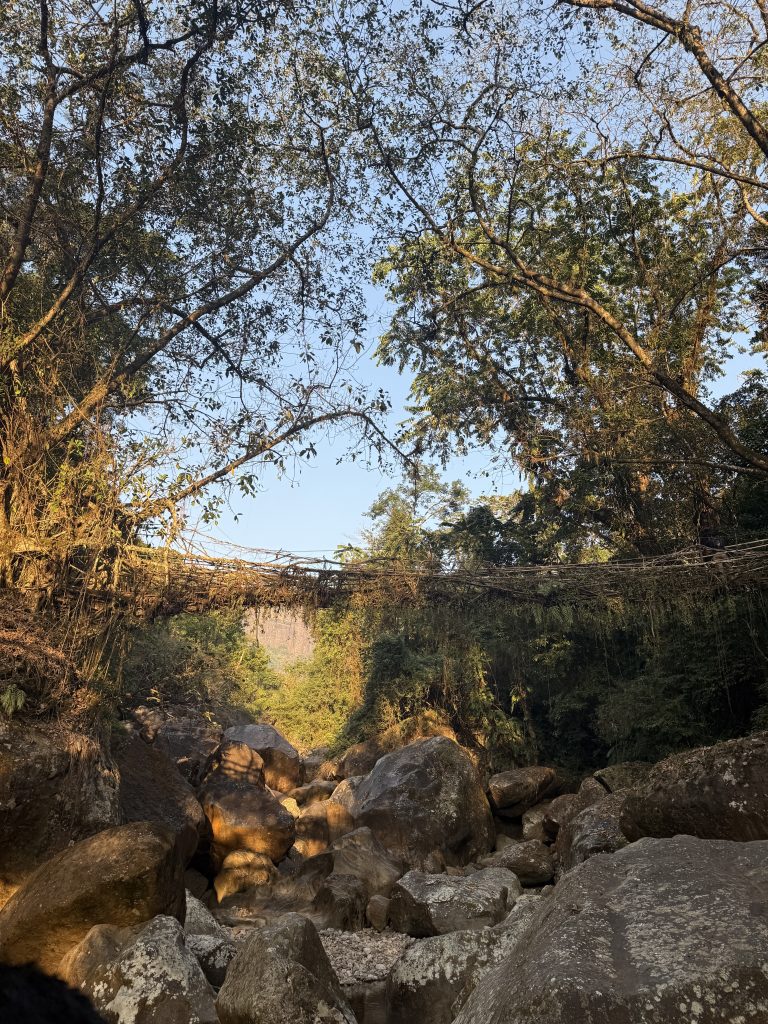
The return journey to Tyrna village
After resting and taking group photos, we began the most gruelling part of the trek: climbing back up the steep 2,000+ steps. Everyone took the ascent at their own pace, and with determination, we finally made it to the top.
At the entrance, a small shop offered freshly made sandwiches, which were a much-needed treat after the tiring hike. We then headed back to our homestay in Cherrapunji, where we relaxed and reminisced about the incredible day.
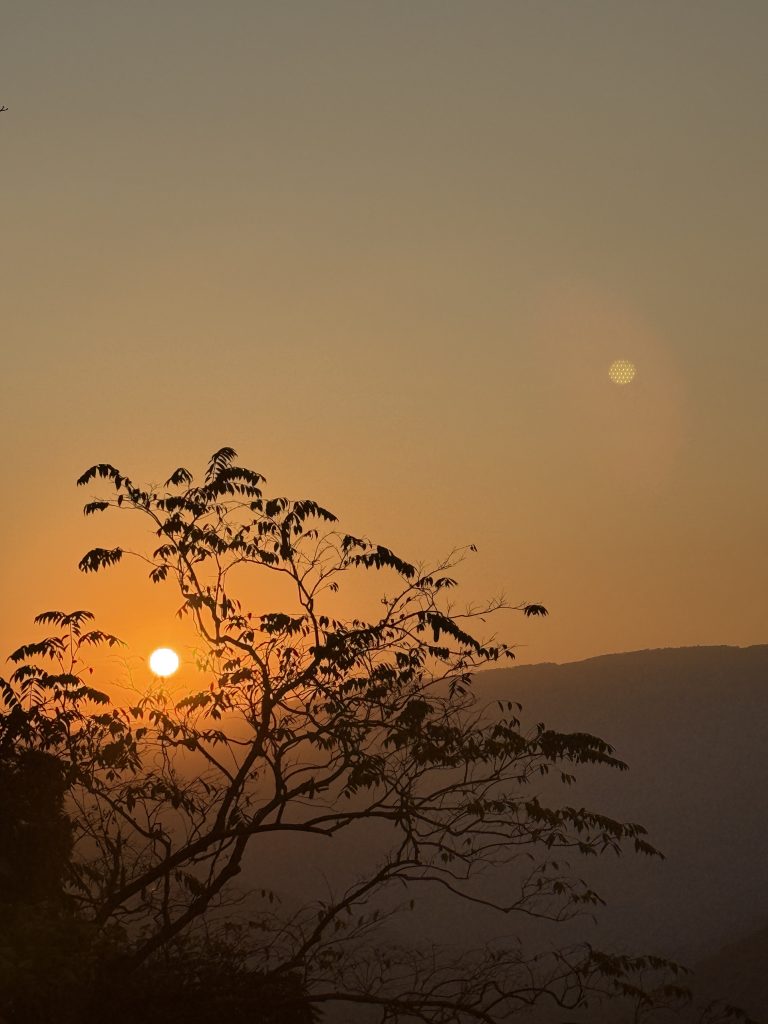
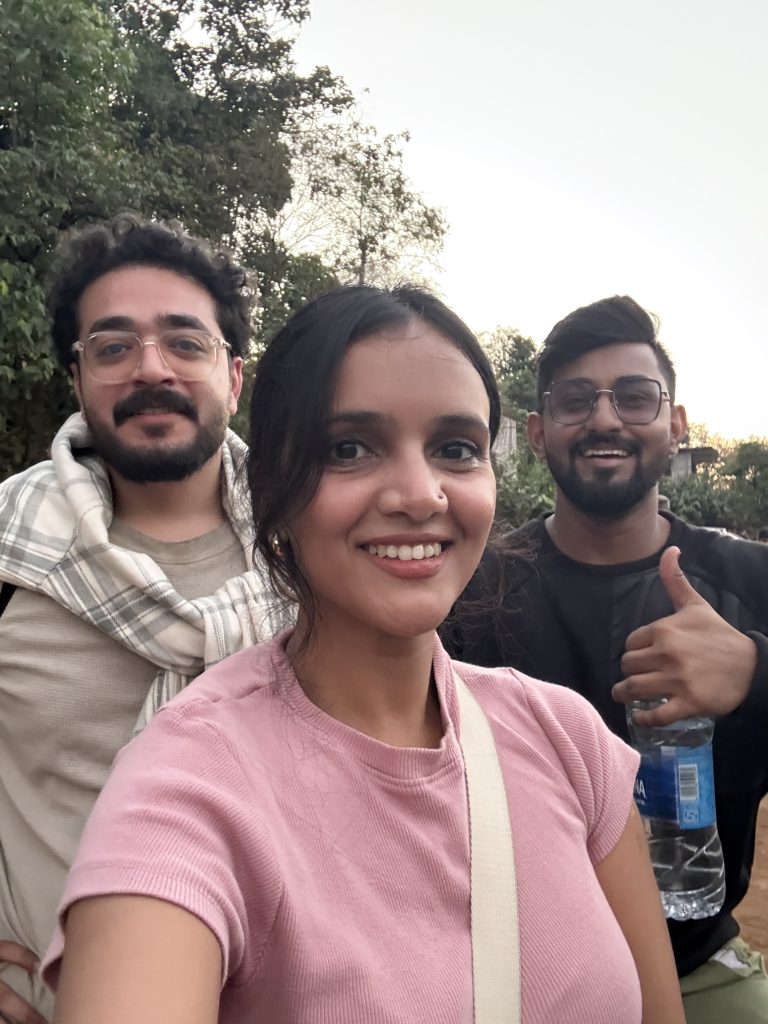
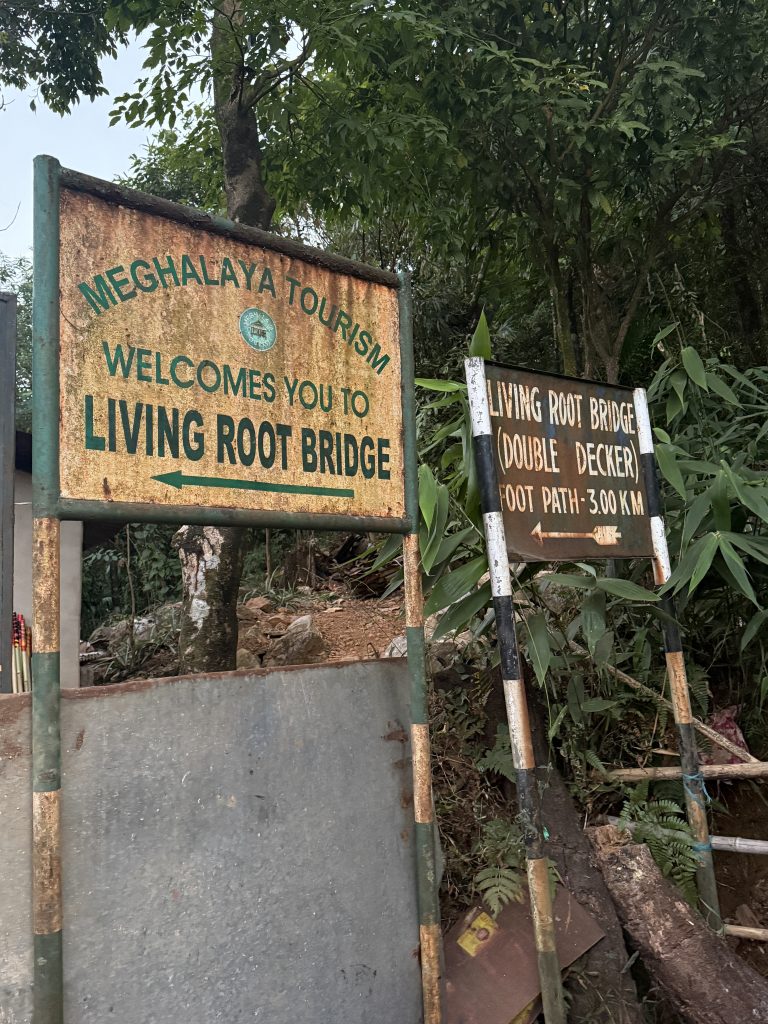
Frequently asked questions
How long is the trek to Nongriat?
The trek from Tyrna to Nongriat Double Decker Root Bridge spans 3 km and includes 3,500 steps, mostly descending. Nongthymmai village, the midpoint, is reachable in 45 minutes, while the final stretch to Nongriat takes another 45 minutes to 1 hour, with a slight ascent near the end. If you plan to hike back the same day, the return ascent typically takes 2-3 hours.
Where to stay for visiting the Living Root Bridges?
The best place to stay is Cherrapunji (Sohra) to ensure you have at least 5-6 hours for the trek. For those who prefer to stay overnight, Nongriat has a few basic homestays offering a rustic experience close to the Double Decker Living Root Bridge.
Are there other must-visit spots on this trip?
Extend your adventure by hiking to Rainbow Falls, located 3 km beyond Nongriat. The trek takes around 2 hours, and it’s advisable to hire a guide as the route can be tricky.
What is the best time to visit the Living Root Bridges?
While Meghalaya is mesmerizing in the monsoon, trekking can be challenging due to slippery trails. The ideal months for visiting the Living Root Bridges of Meghalaya are October to March, when the weather is pleasant and trails are safer.
Is a guide required for the Nongriat Trek?
A guide is not necessary for reaching the Double Decker Root Bridge or the Single Root Bridge, as the path is well-marked. However, if you plan to trek to Rainbow Falls, hiring a guide is highly recommended.
What is the entry fees for Root Bridges?
Nongriat Double Decker Root Bridge: Rs. 20 per person while Single Root Bridge: Rs. 10 per person
What are some essential tips for trekking the Living Root Bridges?
- Carry a poncho or waterproof jacket for unexpected rain.
- Keep cash handy for small purchases, as digital payments may not be accepted.
- Wear sturdy trekking shoes for better grip.
- Apply sunscreen and carry sunglasses for sunny afternoons.
- Respect nature—carry a trash bag to keep the trails clean.
With breathtaking scenery, fascinating traditions, and thrilling hikes, the Living Root Bridges of Meghalaya are a must-visit for nature and adventure lovers! When are you planning your trip?






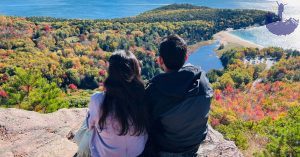

One Response